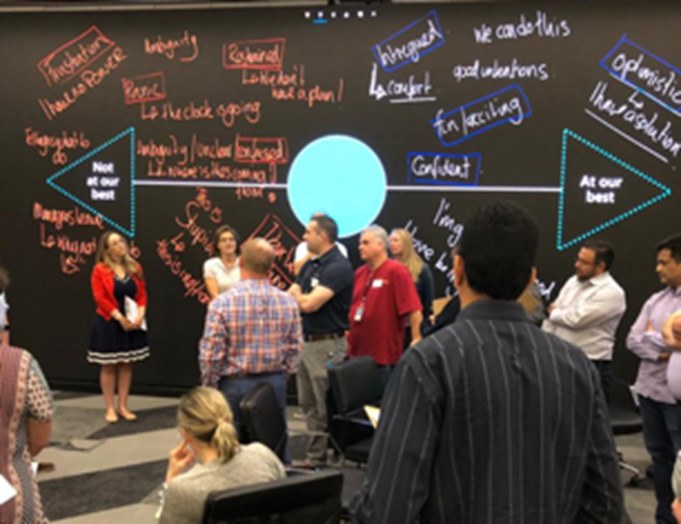Developing Strategy and Leadership through Listening

Shhh…can you hear that? That’s the sound of listening finally taking its rightful place in the boardroom.
In a world gone crazy for immediate results, where we are expected to know our s*** and the loudest voice often wins, some enlightened organisations are taking a different approach. In simple terms, they’re slowing down, shutting up and putting the listening at the heart of their corporate strategies. They are listening to learn.
It might sound simple: Listening, after all, is a long-standing and widely accepted human function essential to communication and healthy relationships. But the type of strategic listening we’re helping businesses develop isn’t business as usual in most of the cultures.
Instead, across our diverse portfolio of client sectors and types, we’re seeing today’s leading businesses take a radically different approach to listening. This “listening leadership” is both active and generative – and it’s taking their understanding of the people they serve to unprecedented new depths.
The old way: Listening to respond and affirm
We’ve all been there. We’re sitting across from a chatting colleague, friend or family member–and we’re waiting to speak. Sure, we’re hearing what they’re saying, but we’re also judging it in real time. Rather than really tuning into their perspective, we’re searching for the thread that affirms our own world view. By the time their lips stop moving, we’re ready to respond through the lens of our own experience.
“Listening to respond” and “listening to affirm” has long been a limitation for many of us as individuals, but it’s also an enormous issue for many organisations. Their intentions are pure, of course – they seek feedback, opinions and input from their customers, people and other stakeholders and take action in response. All good, right?
The problem is the way in which they’ve asked the questions, summarised the results, and formulated the response. All reflect aspects of what’s true about their audiences, but they are wrapped up in what’s true about themselves.
Just the other day, we were speaking to a leadership team who was on the receiving end of an internal pulse survey with some less-than-favourable results. At first, there was panic – “We have to do something about this” – but it soon turned to rationalising. Among other things, we heard: “Compared to other companies like ours, it’s not that bad” and “We are getting this response because we haven’t yet had a chance to implement our new performance management system – things will change.”
By the time the conversation was finished, they’d neatly folded what was effectively a cry for help from their organisation into their own reality. As you imagine, had they proceeded from that point, none of their people’s concerns would have been addressed, and in fact, their inadequate actions might have done more harm than good. They, like all organisations, rely on an understanding of their stakeholders to achieve their goals – failing to properly listen risks their very existence.
The better way: Active, generative listening
One of the UK’s most successful grocery chains – Co-op Food – made headlines earlier this year for its 9-point plan to increase social mobility through its community-based hiring and retention strategies. At the heart of that strategy? You guessed it: Listening.
Co-op realised that in order to genuinely achieve their purpose and “break the class ceiling” (and not just provide lip service to it), they couldn’t simply sit back and interpret what they heard from people through their own lenses. Instead, they had to actively listen.
Active listening is listening to create belonging. It’s listening to create safety. It’s listening to learn. By moving beyond information and even empathy, we can occupy the space author Otto Scharmer refers to as “generative listening.”
As he explains in his book ‘Theory U,’ with this type of listening, organisations set aside their own egos and open themselves up to a new understanding. They do this by “listening and taking onboard the attitudes and emotional responses of others to the subject in question.”
For our clients now making listening a part of their strategies, this approach has been transformative. It has helped them to develop a far more profound understanding of their stakeholders and respond in kind. They are using a listening strategy to create better understanding between customers and colleagues, colleagues and management, and even within themselves as individuals.
Listening for success
Active listening is just that – active. It requires commitment, the right set of skills and behaviours, and a framework against which to measure success. A good starting point is exploring Sharma’s 4 Levels of Listening or Nancy Kline’s Thinking Environment.
From there, it’s about embedding those practices into your strategy and leadership. It’s not easy – but it does work. One business we’re working with reported improved retention rates as a result of better listening. Another, reported a more productive workforce.
All good reasons to sit up and listen.
- December 22, 2023











